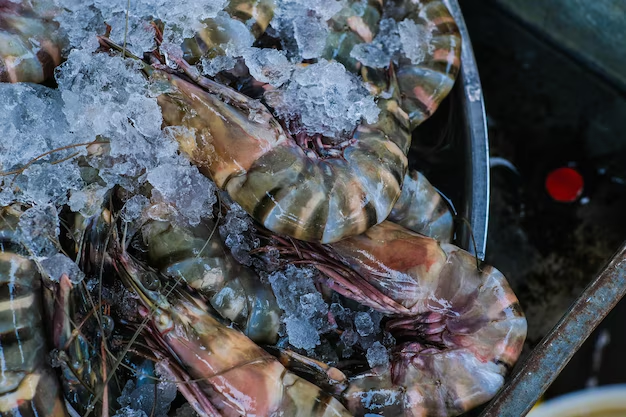How Long Can You Keep Cooked Lobster in the Fridge? A Guide to Shelf Life and Storage
Cooking lobster is a culinary adventure that rewards you with its unique flavors and rich textures. Whether you're showcasing it in a fancy dish or savoring it as a simple indulgence, knowing how to properly store cooked lobster is crucial. But how long can you safely keep cooked lobster in the refrigerator? Let’s explore this question comprehensively, addressing the nuances of storage and offering practical tips along the way.
🦞 Cooked Lobster Storage Basics
Understanding Lobster as a Perishable
Cooked lobster is a perishable seafood item, which means it requires careful storage to maintain its quality and safety for consumption. Proper storage not only ensures that you avoid foodborne illnesses but also helps retain the flavor and texture of the lobster.
The Ideal Refrigeration Period
Cooked lobster generally stays good in the refrigerator for 3 to 4 days. During this period, it maintains its quality if stored properly. However, always use your best judgment before eating, as storage conditions can vary.
Key Storage Tips:
- Prompt Cooling: Refrigerate lobster within two hours after cooking to minimize the risk of bacterial growth.
- Airtight Containers: Use airtight containers or tightly wrapped foil to keep your lobster fresh.
- Position in Fridge: Store in the coldest part of the fridge, often the lower section, to keep it at an optimal temperature.
🛠️ How to Properly Store Cooked Lobster
Choosing the Right Containers
Airtight and leak-proof containers are ideal for storing cooked lobster. Glass or plastic containers with tight-fitting lids help seal in freshness and prevent odors from seeping in. For extra protection, consider wrapping lobster in aluminum foil or wax paper before placing it in the container.
Avoiding Cross-Contamination
Cross-contamination can lead to spoiled lobster and potential health risks. Ensure that your lobster is stored separately from other foods, especially raw meats and seafood, to keep bacteria at bay.
Maintaining Optimal Refrigerator Conditions
- Temperature: A consistent refrigerator temperature of 40°F (4°C) or lower is crucial.
- Humidity Control: Adjust refrigerator settings to minimize moisture, as excess humidity can affect the lobster's texture and flavor.
📝 Recognizing Signs of Spoilage
It's crucial to inspect your cooked lobster before eating. Here are some signs that your lobster has gone bad:
- Off Smell: A strong or unpleasant odor is a clear indicator of spoilage.
- Texture Changes: If the lobster feels slimy or gooey, it's best to discard it.
- Color Changes: Look for any unusual discoloration.
- Mold Presence: Any mold on the lobster or in the container can be harmful.
⚠️ When in doubt, throw it out. Prioritizing safety is essential whenever you're unsure about the quality of your food.
🍽️ Extending Lobster Shelf Life: Freezing Your Lobster
The Freezing Option
To extend the shelf life of cooked lobster, freezing is a viable option. Properly frozen lobster can last for up to 2-3 months while maintaining its quality.
Steps for Freezing Cooked Lobster:
- Cool Before Handling: Allow lobster to cool to room temperature.
- Wrap and Seal: Insert lobster into freezer bags or vacuum-sealed bags. Ensure to remove as much air as possible to avoid freezer burn.
- Label: Label with the freezing date to track its shelf life.
- Store in Freezer: Keep in the main body of the freezer, not the door, to maintain a consistent freezing temperature.
Thawing and Reheating
- Thawing: Preferably thaw in the refrigerator overnight, ensuring gradual and even thawing.
- Reheating: Reheat carefully using methods that preserve moisture, such as steaming or simmering gently in a sauce.
🌿 Use It or Lose It: Creative Leftover Lobster Ideas
Transforming leftover lobster into new, exciting dishes can help you enjoy it before its shelf life runs out. Here are some tasty ideas:
- Lobster Pasta: Combine with pasta and a light cream sauce for a decadent dish.
- Lobster Salad: Toss with fresh greens, avocados, and citrus vinaigrette.
- Lobster Rolls: Pair with a soft roll and a touch of mayo for the classic lobster roll experience.
- Lobster Bisque: Use it in a rich soup, perfect for chilly days.
🚀 Quick Tips for Fresh and Safe Lobster Storage
| 🦞 Tips | 📍 Actions |
|---|---|
| Refrigerate Promptly | Store lobster within 2 hours post-cooking. |
| Use Quality Containers | Choose airtight containers to seal in freshness. |
| Check Refrigerator Temperature | Ensure it's below 40°F (4°C). |
| Watch for Spoilage Signs | Smell, color, and texture are key indicators. |
| Consider Freezing | For extended storage, freeze promptly. |
| Embrace Leftovers | Use in creative recipes before expiry. |
By incorporating these storage strategies, you can ensure your cooked lobster remains a delicious and safe treat for days after preparation.
🧠 Final Insight: Prioritize Proper Storage for Optimal Enjoyment
Storing seafood properly is paramount for both safety and enjoyment. Proper attention to how you store cooked lobster can make a significant difference not only in the dish's longevity but also in the quality of your dining experience. With informed choices, such as using the right containers, managing fridge conditions, and recognizing spoilage signs, you'll be empowered to store lobster effectively. And when in doubt—trust your senses and dining wisdom. Enjoy the bounty of the sea with confidence and savor every bite!
